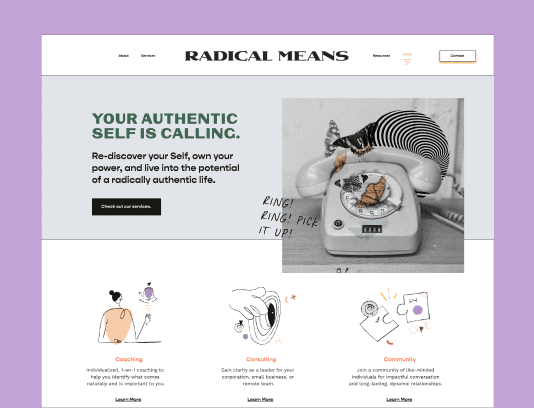Whether you’re a freelance journalist, running a marketing agency, or have any other kind of small business, having a professional-looking website that stays on-brand is non-negotiable – that is, if you value success, honey!
To ensure that you’re on the right track, here are six top essentials for successfully branding a website for your business.
1. You Need a Strong Domain
This is what people will see first, as it’s the entry point to your site. It needs to be clear, not too complicated, and straight to the point, meaning it should convey what your business does upfront.
Some of the do’s and don’ts include:
- Do: Make it easy to spell.
- Do: Use the proper domain extension.
- Do: Make it SEO-friendly.
- Don’t: Make it confusing or off-topic.
- Don’t: Use a lot of hyphens and numbers.
2. Establish Goals
Your website’s goal and purpose should be clear from the beginning. Before you jump straight into designing, ask the following questions:
- Why are you building it?
- What will make it stand out?
- Who is your target audience?
- How will you engage your audience?
3. Make Sure Your Content is Strategic and High-Quality
Search engines reward websites that produce high-quality content that’s relevant, credible, and authoritative. Sites that consistently publish this kind of content are ranked higher, leading to more success. Ensure your content is aligned with your business goals, doesn’t veer off-topic, and provides your audience with the information they want.
4. Have a Clear Description of Your Business
People need to know who you are and what you do from the get-go to avoid confusion. Ensure your homepage banner visually represents your brand and that you have an introductory description near the top of the page that depicts your business in clear terms.
Another feature you shouldn’t ignore is the ‘About Us’ page. People will appreciate knowing a little bit about your personal vision and history. Make it accessible so visitors can easily find out more information about you.
5. Have a Streamlined Structure and Layout
Don’t overcomplicate things! Once you’ve stated your goals, make sure your website is well-thought-out. A standard structure that has been tried and tested (and yields successful results) always includes the following:
- A homepage
- Product of service pages
- Location (where you’re based)
- Contact Page
- FAQ page
6. Use a Good Content Management System
A CMS is an application or software program that creates and manages digital content. A good one will help with the maintenance of your site, and the majority don’t require much technical knowledge to use.
Your content management system also needs to benefit your individual needs, as different ones have different priorities. For example, some focus on budget, and some focus on user-friendliness.
Website Branding: The Takeaway
Branding a website? Keep this list handy to ensure your web design and branding are always on point.





